- Quick Read
- Deep Read ( 6 Min. )
In Today’s Issue
- Adjusting to a big-power era, Germany and Japan enhance militaries
- Post-globalization, what’s next for world trade?
- While soldiers fight, Ukrainians face another threat: Hunger
- Hundreds of Philippine police are filing their resignations. Why?
- For the love of clunkers: An ode to creative car maintenance
Monitor Daily Podcast
- Follow us:
- Apple Podcasts
- Spotify
- RSS Feed
- Download
TODAY’S INTRO
Ronna McDaniel or Harmeet Dhillon? Why I’m glued to the RNC race.
Why should the average voter pay attention to the race for chair of the Republican National Committee, or RNC? After all, national party chairs aren’t as powerful as they used to be. Clout has shifted – ironically owing to campaign finance reform – toward wealthy individuals and super political action committees.
But the head of the party actually does still matter. Whoever wins a majority in voting by 168 RNC members Friday will face a fractious party, already gearing up for the 2024 elections – including former President Donald Trump’s attempt at a comeback.
Remember the 15 rounds of voting it took to elect Republican Rep. Kevin McCarthy speaker of the House early this month? Those same forces are at play, mainstream versus MAGA, at the party meeting in Southern California as Chairwoman Ronna McDaniel seeks a rare fourth term.
Ms. McDaniel’s main opponent, former Trump lawyer Harmeet Dhillon, argues for new leadership after three disappointing election cycles.
Florida Gov. Ron DeSantis, a likely 2024 presidential contender and Mr. Trump’s top competitor for the GOP nomination, endorsed Ms. Dhillon on Thursday. “I think we need a change, I think we need to get some new blood in the RNC,” Governor DeSantis told conservative activist Charlie Kirk, who also supports Ms. Dhillon.
Mr. Trump has not endorsed in the race.
McDaniel supporters say the GOP’s recent underperformance is not her fault, and prefer her style. “Republicans are at risk of being fractured, and Ronna has a steady hand that keeps the different wings together,” Ari Fleischer, a veteran Republican analyst and former White House press secretary, told me Wednesday.
Still, he adds, “elections for party chair are the ultimate high school beauty contest. People make promises, but nobody really knows who will vote for who. I’d be very, very surprised if Ronna lost, but it’s 168 people voting in a secret ballot.”
Share this article
Link copied.

Help fund Monitor journalism for $11/ month
Already a subscriber? Login

Monitor journalism changes lives because we open that too-small box that most people think they live in. We believe news can and should expand a sense of identity and possibility beyond narrow conventional expectations.
Our work isn't possible without your support.
Adjusting to a big-power era, Germany and Japan enhance militaries
Japan and Germany, World War II’s two great vanquished powers, are both enhancing the role and stature of military power in their diplomatic and security policies. Their adversaries may differ, but their motivations are similar.
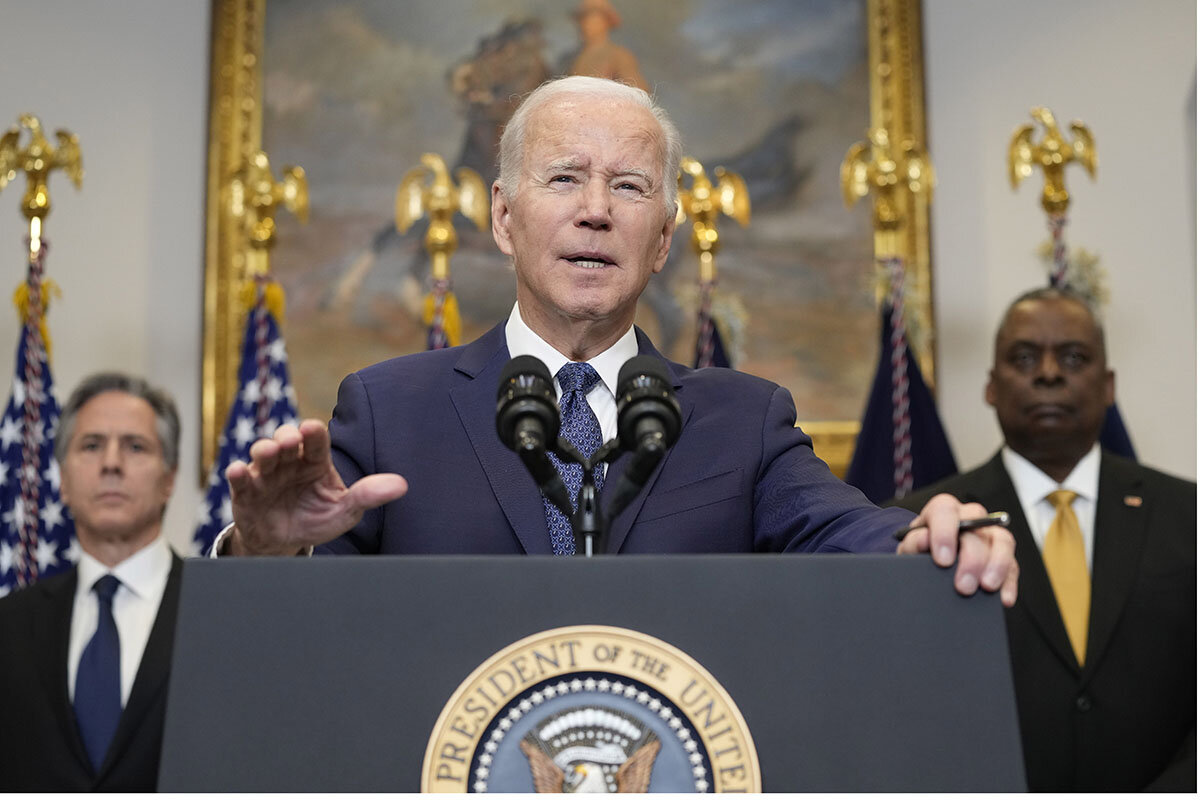
Just hours apart on Wednesday, German Chancellor Olaf Scholz and U.S. President Joe Biden announced decisions to send tanks to Ukraine to help boost its war effort. Not two weeks earlier, Prime Minister Kishida Fumio laid out Japan’s assertive new national security strategy to a supportive Mr. Biden.
The reasons for the simultaneous initiatives to enhance military power can be reduced in each case to one word: for Japan, China, and for Germany, Russia.
But beyond their concerns regarding aggressive, powerful neighbors are worries about shifts in the global security environment, experts say – from the breakdown of the post-Cold War international order, to the waning punch of soft power in an era of big-power politics.
“Japan and Germany are dissimilar in many ways. Japan has undertaken a much faster and sustained rearmament and is a major regional military power, something Germany has not been since the end of the Cold War,” says Hal Brands, a professor at the Johns Hopkins School of Advanced International Studies. “But what is common to both of them are growing concerns about the stability of the international order they both have relied on.”
The war in Ukraine, launched by a permanent member of the U.N. Security Council, he adds, “has sharpened those concerns for both.”
Adjusting to a big-power era, Germany and Japan enhance militaries
At his White House visit this month with a supportive President Joe Biden, Prime Minister Kishida Fumio laid out Japan’s assertive new national security strategy, which includes a commitment to substantially higher defense spending.
A week later, U.S. Defense Secretary Lloyd Austin was in Germany taking stock of Chancellor Olaf Scholz’s commitment to bigger military budgets and to rebuilding Germany’s armed forces as a tool not just of his nation’s defense but of European security policy as well.
Indeed, Chancellor Scholz’s announcement Wednesday that Germany will send a contingent of its Leopard 2 tanks to Ukraine – a step it had resisted taking over recent weeks despite intense pressures from Washington and some European partners – underscored Germany’s new openness to asserting military power in Europe.
Following Germany’s announcement, President Biden announced at the White House Wednesday that the United States will send 31 of its M1 Abrams tanks to Ukraine. The move was widely seen as intended to quash any doubts about the U.S. commitment to Ukraine, while in turn prompting additional commitments of assistance from Western partners before an anticipated spring offensive by Russian forces.
The reasons for the simultaneous initiatives by Japan and Germany, World War II’s two great vanquished powers, to build up their armed forces and enhance the place of military power in their international relations and security policies can be reduced in each case to one word:
For Japan, it’s China.
For Germany, it’s Russia.
But beyond each country’s specific concerns regarding the aggressive behavior of a powerful neighbor are worries about broader shifts in the global security environment, international experts say – from the breakdown of the unipolar post-Cold War international order, to the waning punch of soft power in an era of big-power politics.
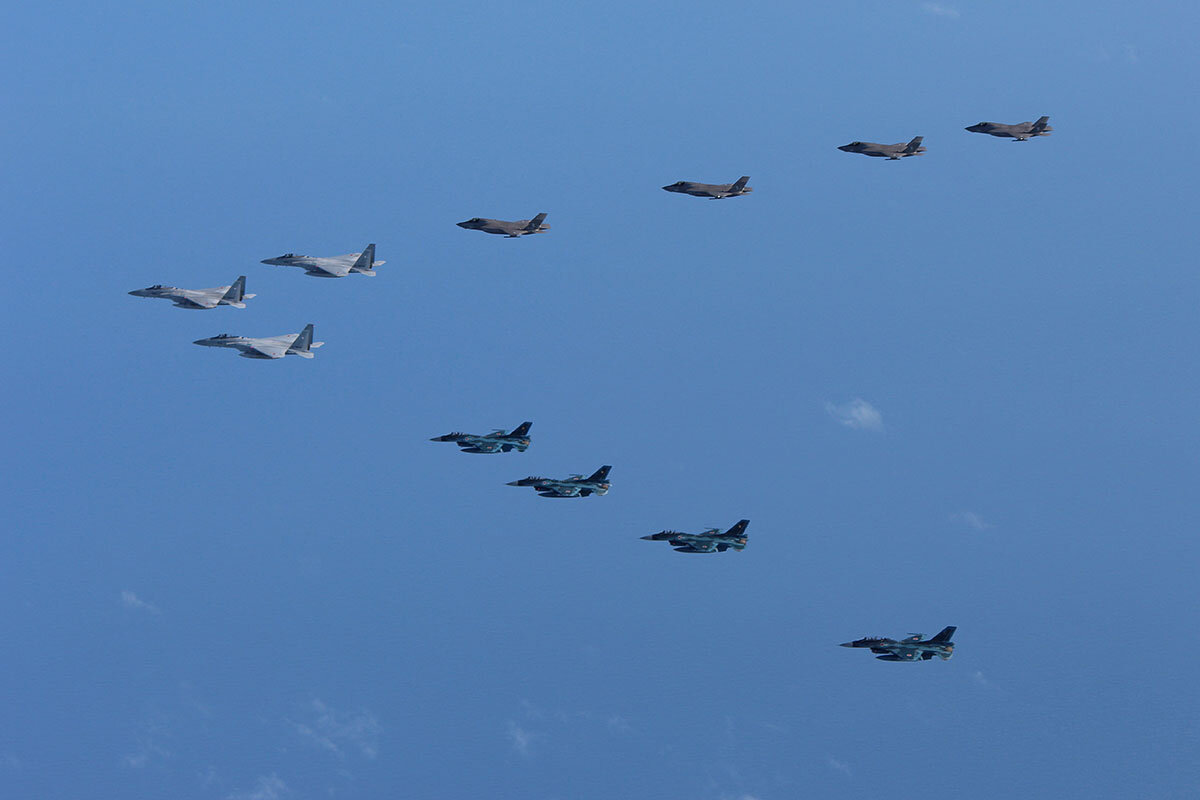
“Japan and Germany are dissimilar in many ways. Japan has undertaken a much faster and sustained rearmament and is a major regional military power, something Germany has not been since the end of the Cold War,” says Hal Brands, a professor of global affairs at the Johns Hopkins School of Advanced International Studies and a foreign policy scholar at the American Enterprise Institute in Washington. “But what is common to both of them are growing concerns about the stability of the international order they both have relied on.”
The war in Ukraine, launched by a permanent member of the U.N. Security Council, “has sharpened those concerns for both,” he adds, “and has prompted moves by both to enhance their militaries – such as committing to raising military spending as a percentage of GDP.”
“A change of era”
Germany was shocked by Russia’s invasion of Ukraine 11 months ago. Since then it has undertaken an intense national debate over the state of its military and the role its military should play in a Europe it had come to assume was beyond the geopolitics of the 20th century and was unlikely to experience war again.
For Japan, the awakening to the threats posed by a rising and increasingly militarily assertive China has been less sudden. But China’s stepped-up actions in the South China Sea and around disputed islands Japan claims as its territory – not to mention Beijing’s increasingly aggressive behavior toward Taiwan – have stirred deep concerns and affirmed Tokyo’s convictions that it must reinforce its military posture to face mounting security threats.
Germany’s shift was highlighted by a speech Mr. Scholz gave just three days after Russia’s Feb. 24 invasion of Ukraine. In it, he proclaimed “a change of era” for German defense policy and a turning away from the country’s negligence of the military’s role in asserting national power.

Over ensuing months many German security experts and outside observers – including in the U.S. Congress – started openly doubting the chancellor’s commitment to his words. But the decision to send Leopard tanks to Ukraine reflects a shift in thinking about military power that is under way in Germany, some say.
“It has taken a while and prompted deep debate, but the Ukraine war has belatedly convinced the German political class of the need to rebuild a military that has been neglected for decades and to revise the thinking about the uses of that military in a new era,” says Dr. Brands.
Close coordination with U.S.
For weeks Germany insisted it would not send any Leopards to Ukraine unless the U.S. first committed to sending the Abrams – a signal that it did not want to be the first to send in battle tanks sure to enrage Russia and prompt renewed accusations from Moscow of NATO’s deepening involvement in the war.
In the end Germany did announce its decision to send tanks to Ukraine before the U.S. did, but only by hours. The close coordination hinted at the intense negotiations senior U.S. officials said took place between Berlin and Washington.
Mr. Biden was unconvinced that the Abrams, a fuel-guzzling and complex machine requiring constant technical upkeep and trained operators, was right for the Ukraine war. Those misgivings were ultimately overcome by the overriding goal of pushing Germany over the line on the Leopards and opening the way for other NATO partners to send in heavier weaponry.
In his announcement, Mr. Biden said the Abrams tanks “will enhance Ukraine’s capacity to defend its territory,” though he insisted their dispatch to the war “is not an offensive threat to Russia.” The Kremlin quickly condemned the decisions to send tanks to Ukraine as a “dangerous provocation.”
Germany’s transition has been slower and faced more resistance than Japan’s in part because Germany went farther both in disarming after the Cold War and in pursuing its convictions that the aggressive geopolitics of the 20th century were in the past, particularly for Europe.
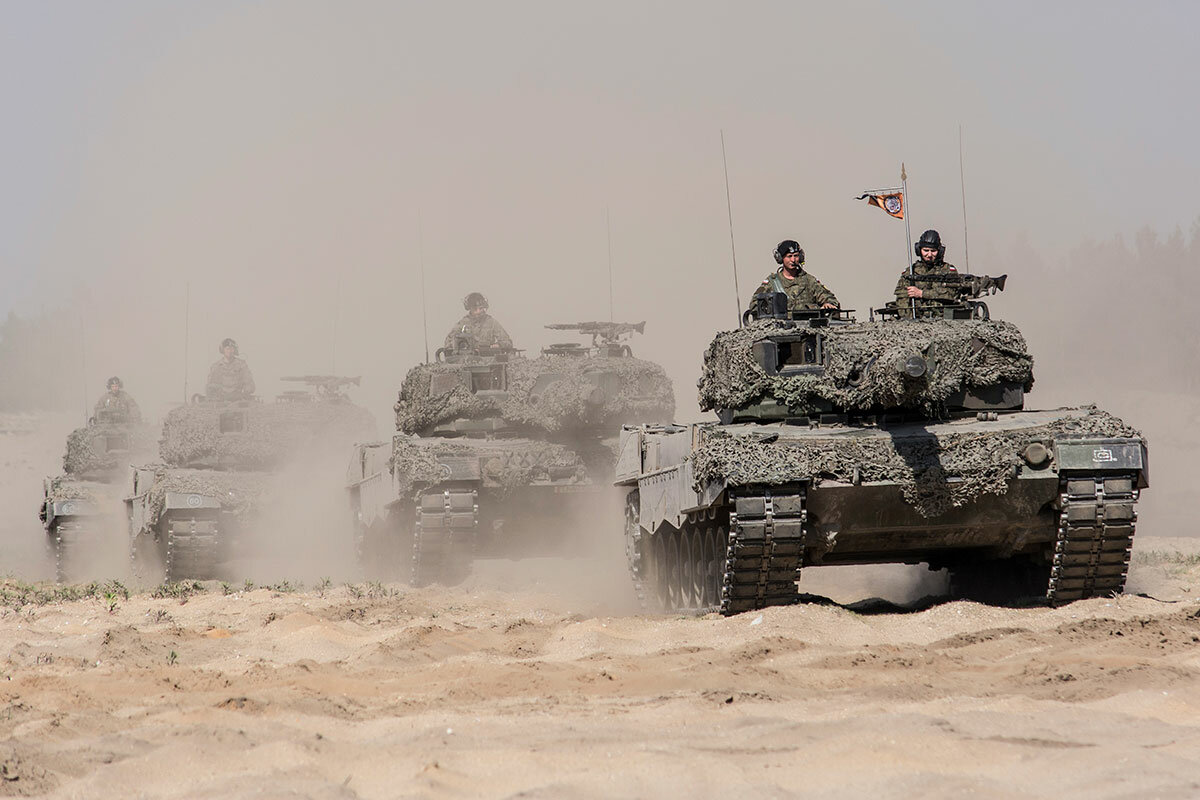
“It’s a little bit of a myth that Germany and Japan are only now rearming; Japan for decades has found creative ways to get around the defense limitations in its postwar constitution,” says Michael Desch, founding director of Notre Dame University’s International Security Center in Indiana.
“But at the end of the Cold War the Germans especially really thought it was the end of history,” he adds, “and one result was they allowed their military to atrophy in a big way.”
Replaying Spanish Civil War
Russia’s bloody campaign to obliterate a former Soviet republic that aspires to join the ranks of Western Europe’s democracies, however, has Germany slaying its old ghosts, some experts say.
A shift in thinking over recent months “now has a lot of people on the progressive side seeing what’s going on in Ukraine as a replaying of the Spanish Civil War,” Dr. Desch says, with the defense of Ukraine the equivalent of the “good fight” some in Europe waged during the 1936-39 conflict on the side of Spain’s leftist Republican democracy. “In a similar way, what we’re now hearing is that to preserve the liberal order, we have to be willing to defend it,” he says.
Moreover, Dr. Desch says Germany is “just now waking up to the reality that the unipolar world and international security order it depended on are over. What has replaced them is a new era of great power politics,” he adds, “and one of the lessons of great power politics is that if you want to be secure, you have to be able to take care of yourself.”
Another feature of an era of great power politics is that the expressions of soft power that were increasingly deployed by both Japan and Germany with the end of the Cold War – everything from international economic assistance and democracy promotion to involvement in international cooperation on trade, health, and climate – seem less influential as a war with global repercussions rages.
“What the war in Ukraine has done is to convince both countries that once the shooting starts, soft power only gets you so far,” says Dr. Brands.
“Soft power won’t save Japan once the shooting starts with China, but Japan knows this,” he says. Germany’s political leaders on the other hand “convinced themselves that, with a stable international order based on U.S. military superiority, soft power was enough for Germany.”
Ukraine has changed that, Dr. Brands adds. “One result is this belated effort to rebuild the military and catch up.”

Patterns
Post-globalization, what’s next for world trade?
Globalization, in disrepute, is on the retreat before protectionism. But free trade has underpinned the world economy for decades. What might a new framework look like?
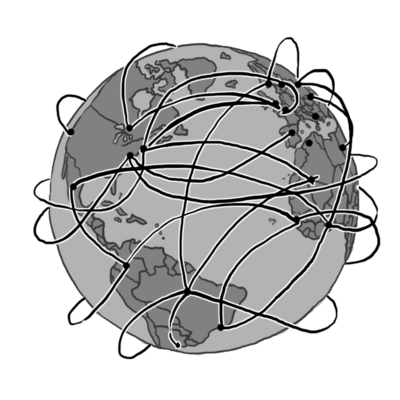
- Quick Read
- Deep Read ( 4 Min. )
With globalization in disrepute, how should the world’s trading powers set about fashioning a new set of rules and relationships? What might “Globalization 2.0” look like?
Today, the assumption that has upheld the U.S.-led economic order since the fall of the Soviet Union – that free trade is sacrosanct – is crumbling before a wave of protectionism. America itself is a big part of that wave, moving to secure its independence and shore up its strength in strategic areas of the 21st-century economy, such as top-end microchips and green manufacturing.
But what is it that has powered growth for the past several decades? Ever freer trade. Hence the need for a new framework.
Washington has a longer-term interest in not seeing global commerce collapse altogether. Trade, as much as military issues, has been the glue holding U.S. alliances together worldwide. Reinforcing trade ties with friends could become a compelling U.S. national security interest. Washington will need their buy-in if its more muscular approach to China is going to succeed over time.
And Beijing knows full well that its prosperity depends on trade, the cornerstone of its rise to great power status.
But fashioning a new way forward will mean lowering the level of protectionist mistrust around the world. That will be a delicate task.
Post-globalization, what’s next for world trade?

Two decades ago, a British prime minister surveyed a world jolted into questioning its old assumptions, institutions, and alliances, and summoned up a powerful metaphor.
“The kaleidoscope has been shaken,” he declared. “The pieces are in flux. Soon they will settle again. Before they do, let us reorder this world around us.”
Tony Blair was speaking after the 9/11 attacks on America. But his words capture an equally daunting challenge now facing the United States and other world economic powers: how to reorder new trade rules and relationships from the shards of the old – and out-of-favor – orthodoxy of globalization.
A kind of “Globalization 2.0.”
That is a particularly difficult task. The heyday of globalization – the China-powered 1990s and early 2000s growth spurt – is in the rearview mirror. Today, the assumption underlying the U.S.-led economic order since the fall of the Soviet Union, that free trade is sacrosanct, is crumbling before a wave of protectionism.
The U.S. is very much part of that wave, swollen in Washington by a bipartisan consensus that America must avoid ceding supremacy to China. That means securing U.S. independence and shoring up its strength in strategic areas of the 21st-century economy, such as top-end microchips and green manufacturing.
Here’s the conundrum, however. What has underpinned the world economy, and powered growth, for decades? Increasingly unfettered trade.

A wholesale unraveling would risk a serious global economic slowdown. Yes, China would take a major hit. But so would America.
And U.S. allies in Europe and Asia are already airing their displeasure at President Joe Biden’s protectionist Inflation Reduction Act, which offers generous government subsidies to encourage green industries.
Thus the search for a workable new framework for international trade.
It’s a tall order, given the overriding weight of the adversarial relationship between the United States and China, the world’s two biggest economies.
It’s also clear that Globalization 2.0 would look very different from the original model.
That’s because the old order has come tumbling down not from a single, horrifying blow like 9/11, but from a serial battering.
It started after Beijing’s 2001 entry into the World Trade Organization, with signs that China’s trading relationship with the United States and the developed economies of Europe was decidedly unequal. It shifted a million jobs to lower-wage factories in China. Western companies hopeful of tapping into China’s domestic market found it skewed in favor of state-subsidized local competitors, and they were also pressured to part with their intellectual property.

Then came the 2008 financial crash: Globalization delivered global contagion.
And finally, a new series of jolts: a pandemic that wrought havoc on world supply chains; China’s lockdowns at home and its truculence toward Western trading partners critical of its policies; and the economic fallout from Russia’s invasion of Ukraine, such as rising energy and food costs.
It’s little wonder that many national governments, not just America’s, have been concentrating on protecting their own citizens’ and companies’ economic health.
There are also powerful economic, political and national security motives behind two of Washington’s most assertive new trade policies – its ban on sales to China of the means to produce the latest generation of microchips, and the package of nearly half-a-trillion dollars to subsidize U.S. domestic production of microchips, electric cars, and low-carbon energy.
The Biden administration has shown no signs of changing course on either policy, so European allies fearful that their own green-economy companies will chase U.S. subsidies may end up launching a subsidy package of their own to keep them at home.
Still, Washington has a longer-term interest in not seeing global commerce collapse altogether. Trade, as much as military issues, has been the glue holding U.S. alliances together worldwide. And Beijing knows full well that its prosperity depends on trade.
At last week’s annual World Economic Forum in the Swiss resort of Davos, China’s vice premier, Liu He, dialed back Beijing’s traditional anti-Western rhetoric and reaffirmed his country’s determination to “open up the world.”

Mr. Biden could well run into domestic headwinds on the two most obvious ways of using trade to cement America’s alliances – a comprehensive trade agreement with the European Union and rejoining the Trans-Pacific Partnership, the trade grouping it helped set up in Asia as a counterweight to Chinese influence.
Former President Donald Trump pulled America out of TPP. Many of his supporters in the Republican Party reject not only the U.S.-China embrace at the heart of the old globalization, but liberalized world trade in general.
Still, reinforcing trade ties with friends could become a compelling U.S. national security interest. Washington will need their buy-in if its more muscular approach to China is going to succeed over time.
And there may be a cautionary lesson in Prime Minister Blair’s appeal after 9/11.
With the kaleidoscope shaken, he felt the window for a coherent international response would not stay open for long. “This is a moment to seize,” he said. He set out an agenda that went beyond merely “punishing the guilty” and emphasizing causes such as social justice and economic advancement.
Yet that lofty vision was swallowed up by conflict on the battlefields of Afghanistan and Iraq – a stark reminder of the challenges facing would-be architects of Globalization 2.0.

While soldiers fight, Ukrainians face another threat: Hunger
Food security has become critical to Ukraine's defense against the Russian invasion. Volunteers willing to drive and hand out much needed groceries to cities under siege are key to that effort.

- Quick Read
- Deep Read ( 5 Min. )
Food access has become a battlefront in Ukraine’s war with Russia.
Almost a year ago, Russia began a blockade of the Black Sea ports that handled 70% of Ukraine’s prewar imports and exports, putting a vice on the economy and raising the price of grain worldwide. Inside the country, especially near the front lines, food insecurity can be an almost daily threat. Were access to dip even slightly, a city like Kherson could face a humanitarian crisis.
Aid workers like World Central Kitchen volunteer Natalia Levinskaya have helped keep that crisis from becoming reality.
Each day she arrives at a distribution center in Mykolaiv at 7 a.m. and then delivers hundreds, if not thousands, of meals until as late as 10 p.m. She and her team are in the phalanx of Ukraine’s wartime civil society, which has met need after need since last February and sustained their country’s fight on the home front.
The work to meet that kind of demand is immense – but so is the reward, says Ms. Levinskaya. “You feel satisfied and you feel joy,” she says, “the joy that people need you and you do something to help them.”
While soldiers fight, Ukrainians face another threat: Hunger
On a freezing day in Kherson’s Tavricheskii District, about 300 people wait in line beside apartment buildings, next to a small park. A van pulls up. World Central Kitchen volunteers wearing orange vests and black body armor open the back doors, and in 15 minutes, fill every open hand with a Styrofoam container holding a hot meal.
The van then heads to another drop-off by more residential buildings – one of which was partially destroyed by a September artillery attack. As the volunteers distribute bags of food, Russian shelling can be heard hitting the city somewhere in the distance.
Still the locals – parents, pet owners, children, seniors, one person with a herd of goats – keep forming a line. In Kherson, one doesn’t ignore two weeks of free groceries.
Still, “we have a feeling that there’s enough food” in the city, says Natalia Levinskaya, one of the volunteers. “We are not the only ones who help.”
Food access has become a battlefront in Ukraine’s war. Almost a year ago, Russia began a blockade of the Black Sea ports that handled 70% of Ukraine’s prewar imports and exports, putting a vice on the economy and raising the price of grain worldwide. Inside the country, especially near the front lines, food insecurity can be an almost daily threat. Were access to dip even slightly, a city like Kherson could face a humanitarian crisis.
Aid workers like Ms. Levinskaya have helped keep that crisis from becoming reality. Each day she arrives at a distribution center in Mykolaiv at 7 a.m. and then delivers hundreds, if not thousands, of meals until as late as 10 p.m. She and her team of volunteers are in the phalanx of Ukraine’s wartime civil society, which has met need after need since last February and sustained their country’s fight on the home front.
“This is always the case in Ukraine,” says Oleg Nivievskyi, a professor at the Kyiv School of Economics’ Center for Food and Land Use Research. “When there is an opportunity, Ukrainians are very entrepreneurial and can find ways to deliver the food.”

“Not just about food availability”
Each week Professor Nivievskyi monitors the availability and price of 21 staple groceries like flour, bread, and eggs, along with the average salary in each region of Ukraine. Together, the data form an index of food security, which is essentially an estimate of how much food people can afford in each part of the country. As of September, depending on the area, the food-buying power of the average Ukrainian had had fallen by as much as 44%, according to his index.
“Food security is not just about food availability,” says Professor Nivievskyi. “This is also about the incomes.”
By October last year, the last month for which data is available, the World Bank had Ukraine’s food inflation at 36%, among the highest rates in the world. That’s been particularly difficult for citizens with fixed salaries.
Maria, an elderly woman wearing a thick brown coat, grabs a bag of groceries from the volunteers and stands to the side. She and her husband live on pensions, which now buy less than they used to, and can be difficult to access. In early December, they had to collect their pension from another bank further away because the local branch closed due to shelling.
“I have something at home, of course – some reserves,” she says, looking down at her bag of food. “But this helps.”
Kherson is far different than cities like Kyiv, Lviv, and Odesa, where supply chains are working almost like normal. Even in a battered city like Mykolaiv, about 45 miles northwest of Kherson, grocery stores are fully stocked with fresh fruit and meat.
“Some of [the supply is coming from] normal market transactions – food being imported from Western Europe,” says Elizabeth Cullen Dunn, who studies food security at the University of Indiana, Bloomington.
Ukraine is an agricultural powerhouse, which helps when war threatens domestic food security, she says. Agricultural products accounted for around 40% of prewar exports and only 10% of prewar imports. Grain and other foodstuffs trapped inside the country due to Russia’s blockade – partially eased by a grain deal negotiated by the United Nations – can also feed Ukrainians.
In addition, says Professor Nivievskyi, Kyiv has relaxed some requirements for food imports since the war. Labels, for example, no longer need to be translated into Ukrainian.
It’s only in areas near the front lines where food availability and affordability are both acute. At the start of December, Kherson – whose population has hovered around 70,000 since liberation – only had one open grocery store.
In cities like this, says Professor Dunn, volunteer networks keep the food supply stable.
“We just wanted to help”
Last spring in Mykolaiv, Ms. Levinskaya, her brother, and her son all quit their jobs. War had come to their hometown, and they decided they were going to start volunteering.
“It didn’t matter for us” what kind of work we did, says Ms. Levinskaya. “We just wanted to help.”
At first, they started dropping off food unofficially, distributing 10 to 20 kits a day with the help of local officials. They later joined World Central Kitchen, one of the largest nongovernmental organizations operating inside Ukraine, to expand their reach.
Each day, after loading hundreds of prepackaged bags into their vans, the family flashes their IDs at military checkpoints and visits points in Kherson marked on a map the night before. When artillery attacks land nearby, they have to speed somewhere else. Otherwise, people will keep lining up, putting themselves in danger.
A single day’s worth of deliveries can be up to 6,000 meals, though the number varies widely. The most people they ever saw queued for a single drop was 1,500.
“All the people are in need,” says Ms. Levinskaya. “It’s younger people, older people, people who don’t have jobs, families – they need food.”
Their bags of food are full of pasta, sugar, meat, flour, oil, and other nonperishables – a two-week supply for one person. “These are the best food packages that you can find,” says Ms. Levinskaya. “People call these the ‘presidential packages.’” Her son jokes that they’re fit for President Volodymyr Zelenskyy.
Their own income is less luxurious. Since leaving work, the family relies on government unemployment aid to pay bills. “We get used to it,” says Ms. Levinskaya. “This is the way you can be at least helpful.”
Regardless, she says, everyone’s adapting. In early December, Kherson had little access to electricity, and many lacked water. People whose gas stoves still worked could cook inside. Those who didn’t had to heat their food on campfires outside.
The work to meet that kind of demand is immense – but so is the reward, says Ms. Levinskaya.
“You feel satisfied and you feel joy,” she says, “the joy that people need you and you do something to help them.”
Oleksandr Naselenko supported the reporting of this article.

Hundreds of Philippine police are filing their resignations. Why?
The ongoing purge of police officers involved in the Philippines’ illegal drug trade could make way for a less violent war on drugs, but victims say it does little to deliver justice for past offenses.

- Quick Read
- Deep Read ( 6 Min. )
Some 900 generals and colonels have filed their resignations from the Philippine National Police (PNP) this month in a bid to restore trust as leaders recalibrate the country’s anti-drug strategy.
With the PNP on the front lines of the Philippines’ violent war on drugs, extrajudicial killings and the reselling of seized drugs have marred the government’s campaign. Interior Secretary Benhur Abalos admitted that his request that all senior-level officers voluntarily resign is a “shortcut” to the lengthy judicial process, but told reporters, “It’s hard to fight in a war when your ally will be the one to shoot you in the back.”
The PNP’s top brass will continue working until a committee assesses their links to the drug trade and decides whether to accept their resignation.
While some welcome the pivot away from former President Rodrigo Duterte’s laissez-faire approach to police misconduct, rights advocates and drug war victims have criticized the resignation plan for sidestepping existing processes for accountability.
“It is not a shortcut; it is a deviation,” says Carlos Conde, a senior researcher with the Asia Division of Human Rights Watch. “If the government is really serious, it should investigate the cases that implicate the police in the extrajudicial killings, planting of evidence, [and] other human rights abuses.”
Hundreds of Philippine police are filing their resignations. Why?
For years, the Philippine National Police (PNP) has been on the front lines of the country’s violent war on drugs, and all the corruption that comes with it. Now, in a bid to restore public trust as leaders recalibrate the country’s anti-drug strategy, Interior Secretary Benjamin “Benhur” Abalos Jr. has urged all senior officers to voluntarily resign by Jan. 31.
So far, some 900 generals and colonels have offered to vacate their posts, but will continue working until a committee assesses their links to the drug trade and decides whether to accept or reject their resignation.
Mr. Abalos admitted that the “very radical approach” is a “shortcut” to the lengthy judicial process. “It’s hard to fight in a war when your ally will be the one to shoot you in the back,” he told reporters in a news briefing. “We need to cleanse our ranks. The people who trust us must trust us even more.”
While some welcome the pivot away from former President Rodrigo Duterte’s laissez-faire approach to police misconduct, few see it as a legitimate step toward justice. Rights advocates and victims of the drug war have criticized Mr. Abalos’ focus on the PNP’s top brass and his reliance on internal reviews, saying the resignation plan sidesteps existing processes for accountability.
“It is not a shortcut; it is a deviation,” says Carlos Conde, a senior researcher with the Asia Division of Human Rights Watch, describing Mr. Abalos’ call as “a PR stunt.”
“If the government is really serious, it should investigate the cases that implicate the police in the extrajudicial killings, planting of evidence, other human rights abuses, and involvement in the illegal drug trade,” he says.
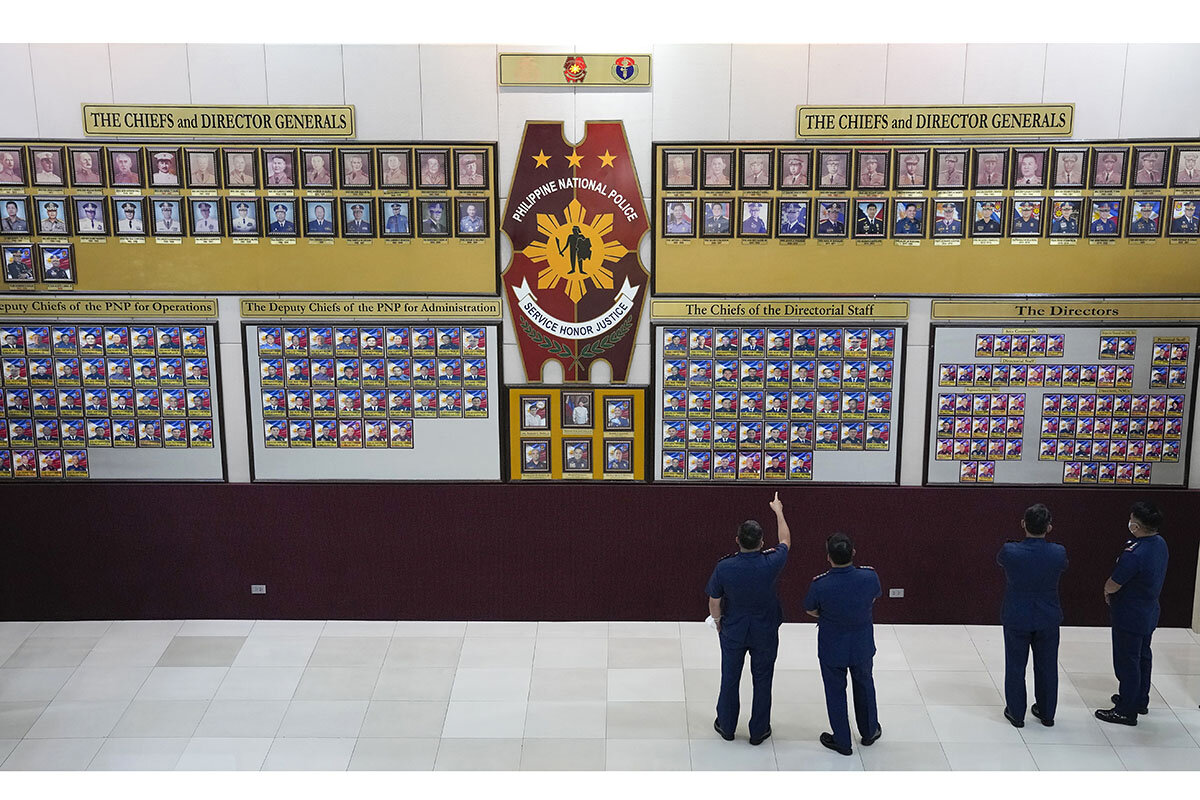
Problem in all ranks
The Philippine drug war has claimed up to 30,000 lives, according to rights groups. Lawyer Kristina Conti of the National Union of People’s Lawyers argues that everyone in the PNP, including those in the lower ranks, must be investigated.
The police “were given so much latitude in implementing the war on drugs. There was a blanket toleration of any abuse,” says Ms. Conti, an assistant to counsel for the International Criminal Court’s probe into the drug war. “The promise of absolution ... emboldened police officers to commit crimes.”
In addition to extrajudicial killings, the issue of stealing and reselling illegal drugs has long marred the government’s campaign. Indeed, the recent call for resignation came amid growing reports that cops were underreporting seized drugs.
In October, for example, two anti-narcotics operatives allegedly sneaked 42 kilograms of methamphetamine – worth more than $5 million – out of a massive drug raid at a lending agency office reportedly owned by police Master Sgt. Rodolfo Mayo Jr., who was assigned to the PNP’s Drug Enforcement Group and arrested the following day with 2 kilograms of drugs in his car.
Several politicians and public officials, including a group of 147 city governments, have expressed support for cleaning up police ranks. The League of Cities of the Philippines called Mr. Abalos’ appeal “necessary in upholding the principles enshrined in our Constitution” and “an opportunity to defend the honor and sacrifices of police officers.”
Among the resolution’s signatories was Baguio City Mayor Benjamin Magalong, a former PNP general who was recently named to a five-person committee that will investigate police officials’ links to the drug trade.
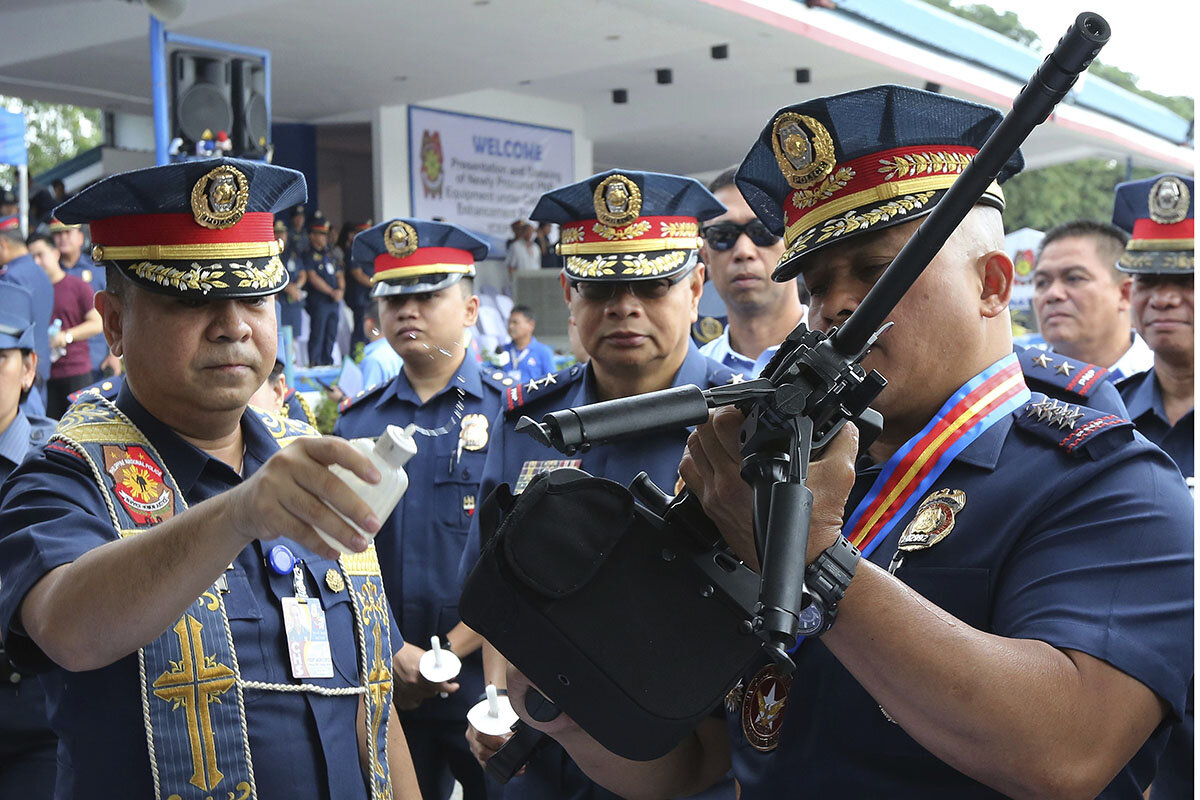
Keeping offenders “out of ... sight”
In a press conference Jan. 13, Mr. Abalos said the names of police officials found to have links with the illegal drug trade will remain confidential. Charges against them will be “pursued in court as mandated by law,” he explained, but if the evidence is weak, the government should “let them retire peacefully.”
That plan inspires little trust in Mary Ann Domingo, whose son and husband were killed in September 2016 during the height of President Duterte’s war on drugs.
“The public do not have access to police internal investigation,” she says. “We won’t know if they really hold those who are accountable, especially those who are involved in drug-related cases, or if they just keep them out of public sight.”
Cristina Palabay, secretary-general of the human rights alliance Karapatan, agrees that the push for internal cleansing “is a superficial strategy that will barely scratch the surface” of police involvement in the drug trade.
“Instead of strengthening the capacity ... to swiftly investigate and judiciously punish and resolve cases involving corrupt practices of police officials, this strategy gives them an easy way out of scrutiny by the public,” she says.
Killing continues
Mr. Abalos’ internal cleansing strategy is backed by President Ferdinand “Bongbong” Marcos Jr., who assumed office last summer and sees the purge as part of a “recalibrated” war on drugs.
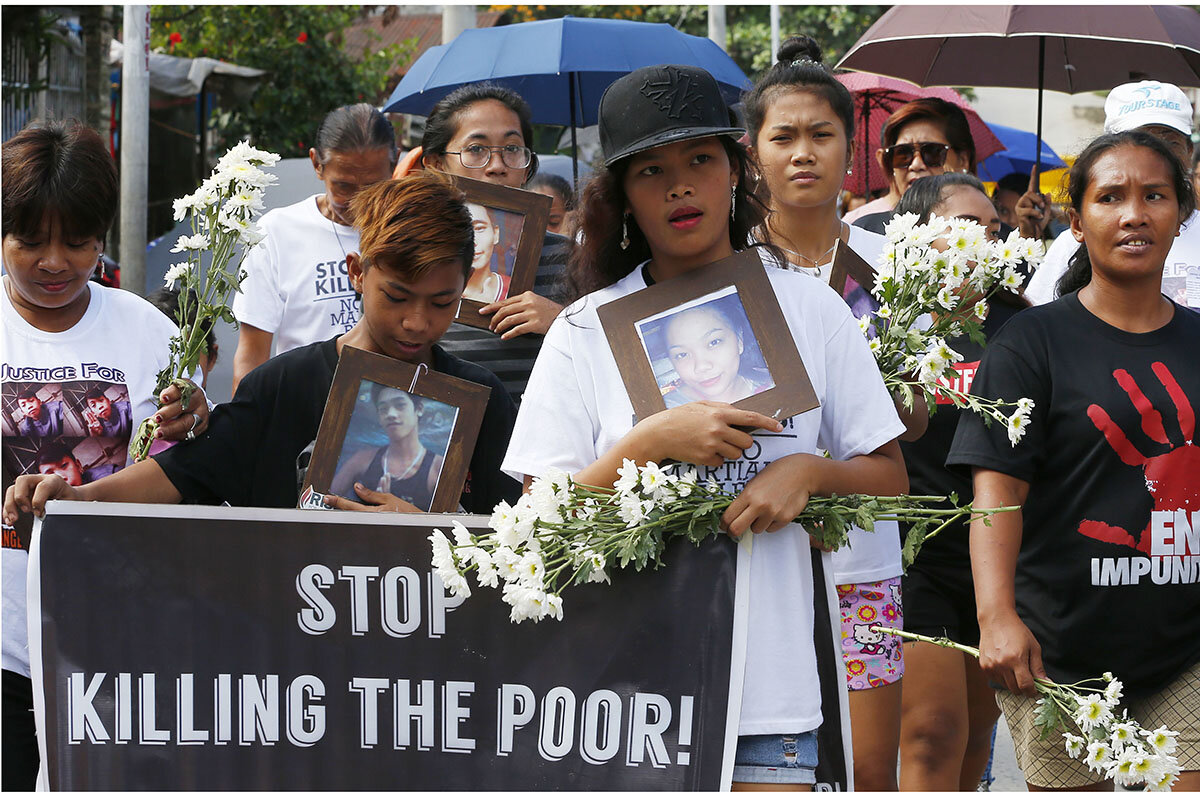
Last year, Mr. Marcos announced that his administration will sustain the anti-narcotics campaign launched under Mr. Duterte, but with a focus on preventing the use of illegal drugs and the rehabilitation of users.
“We are looking more for the upstream, upstream of the problem, the prevention,” he said in a televised show. “Let us teach the children: ‘Do not go there. You won’t achieve anything. Most of those who went there were either jailed or are now dead. So why would you want that?’”
Yet even with the recalibrated approach, authorities have reported some 61 deaths related to the anti-narcotics campaign since Mr. Marcos took office in July. Dahas, a monitoring project by the University of the Philippines Diliman’s Third World Studies Center, counted 175 drug-related killings from July 1 to Dec. 31, 2022 – higher than the death toll during Mr. Duterte’s last six months in office.
Phil Robertson, deputy director of Human Rights Watch’s Asia Division, says the government has to provide “real changes on the ground” if the Marcos administration “is serious about reversing some of the damage done to the human rights records in the Philippines by Duterte.”
For those who’ve lost loved ones in the war on drugs, reversing that damage requires justice. But holding the perpetrators accountable is next to impossible “if the justice system will continue to favor those who are in power,” says Mrs. Domingo, the widow.
She’s filed complaints against the police officers who back in 2016 allegedly shot her husband and son to death. The Office of the Ombudsman did not find basis for murder charges, as Mrs. Domingo originally sought, instead opting for the less severe and bailable offense of homicide. The case – one of the few filed against police officers during Mr. Duterte’s war on drugs – is still ongoing.
“The government’s move to allow police officers to voluntarily quit is an additional layer of agony and anxiety for families,” she says. “We will spend our lives looking over our shoulders because the people responsible for the deaths of our loved ones are free.”

Essay
For the love of clunkers: An ode to creative car maintenance
Youthful priorities may shift as we mature, a process often hastened by hard experience – such as having your stylish but cheap car quit on the Tappan Zee Bridge.

- Quick Read
- Deep Read ( 3 Min. )
-
By Chuck Wilcoxen Contributor
I bought my first car months before I got a license. It was a faded tan Volkswagen Squareback, and I drove it back and forth in our driveway.
It was the first of many cars with mechanical quirks. It would run for 20 minutes and stop. An hour later, it could be restarted for another 20 minutes. I finally sold it to my dad, who’d drive it to the train station, only 10 minutes away .
Next was a well-polished, used Triumph Spitfire. Breakdown highlights include on the Tappan Zee Bridge, in midtown Manhattan at rush hour, and finally – terminally – on Interstate 80 at mile marker 111 in the Pennsylvania mountains.
But first in my string of questionable and inexpensive transportation is a rot-hollowed Porsche 914 with no heater or exhaust system. A shade-tree mechanic welded in an olio of pipes and baffles. Heavier pieces of the undercarriage were secured with leather belts from Goodwill.
My duct tape engineering days are behind me. I drive a mechanically sound SUV for which I paid several thousand dollars. But parsimonious habits die hard: Last week I found a 10-speed bike at the dump. I cleaned it, pumped up the tires, oiled the chain, and put it back on the road.
Didn’t spend a dime.
For the love of clunkers: An ode to creative car maintenance
I bought my first car months before I was eligible to get a driver’s license – I couldn’t wait. It was a faded tan four-speed Volkswagen Squareback (Google it), and I drove it back and forth in our driveway. I paid $420 for it, a hard-fought $30 less than the asking price. By the time I took my driver’s test, I was expert at shifting into reverse and first gear. Our driveway was only 75 feet long, but I’d still manage to accelerate to 30 miles an hour before slamming on the brakes, screeching to a stop just inches from the garage door. On those days my mom would often leave the house at a jog, returning only when she calculated I was low on gas.
That car was the first of many I owned that had mechanical quirks and character traits that forced me to adapt, improvise, and grow. The car would run fine for about 20 minutes, then decide it was done for a while. After napping for half an hour or so, it would allow itself to be restarted and then run for another 20 minutes. Nobody ever figured out why.
I sold that Squareback to my dad, and he drove it to the station every day – a 10-minute ride – without incident.
My next car was a well-polished, used Triumph Spitfire. Lovely to look at, but such a nasty disposition. Breakdown highlights include the middle of the Tappan Zee Bridge, the Queensboro Bridge, Madison Avenue and 46th Street at 5:15 p.m., the FDR Drive at 1 a.m., and finally (that is, terminally) on Interstate 80 at mile marker 111 in the Pennsylvania mountains. While some older British cars had trouble starting in rainy weather, mine was sidelined by humidity. Experience taught me to park it at the top of a hill, or somewhere I could round up four or five people to help me push-start it.
After my wife and I married, I bought another Squareback, canary yellow, from a trustworthy fireman in the dark for $300. On the drive home, I hit a bump and my seat dropped an inch on the left side. Savvy car buyers check for rust by seeing if a screwdriver will punch through the floor pans. I could punch through with my pinkie. That was the car we drove to take my 5-year-old nephew to see “The Black Cauldron.” On the way home, he started laughing nervously in the back seat. “Uncle Chuck,” he said, “I can see the road. Through the floor.”
“You are looking at where the car is not,” I said. “Keep your feet on where the car is.” He laughed again, a thin, pitiable laugh, and held his little legs straight out in front of him for the rest of the trip. This may be the first time my sister is hearing this, so – sorry!
The cheapest car I ever bought? A derelict Ford Pinto station wagon that hadn’t run for two years, for $50. When I started it for the first time (with jumper cables and bulletproof optimism), oil shot out in every direction from rust holes in the oil filter. I replaced the filter, added two quarts of oil, charged the battery, and ran it for two years without a hitch.
But the long-standing leader in my string of questionable and inexpensive transportation is a rot-hollowed Porsche 914 I bought as a teen. It had no heater or exhaust system. A shade-tree mechanic in the next town welded in a makeshift olio of pipes and baffles, and we (somehow) got it through inspection. By the time it finally gave out, it was a miracle of invention and compromise. The throttle cable was a length of cord for a Venetian blind. Many of the heavier pieces of the undercarriage were secured with old leather belts from Goodwill.
My heady days of duct tape engineering are behind me, now. The state in which I live requires rigid annual vehicle inspections, and I’ve reluctantly concluded that most repairs are best done by real mechanics with real tools and parts. The last car I bought was a mechanically sound domestic SUV, and I spent several thousand dollars for it. But parsimonious habits die hard: Last week I brought home an old 10-speed bike from the dump. I cleaned it, pumped up the tires, oiled the chain, and put it back on the road.
Didn’t spend a dime.
Other headline stories we’re watching
(Get live updates throughout the day.)The Monitor's View
Small country, model gains in Africa
- Quick Read
- Deep Read ( 3 Min. )
-
By the Monitor's Editorial Board
Gambia is a sliver of land, the smallest on the African continent. Yet according to the latest Ibrahim Index of African Governance, it made the greatest improvement in overall governance from 2012 to 2021. This is both notable and instructive for the other 53 African nations.
Gambia started its transition to democracy just six years ago, after 22 years of brutal dictatorship. Its fledgling transition offers a case study in how societies achieve stability and growth by practicing values such as equality, transparency, justice, and respect for individual freedom. As a small-business owner named Lamin Marong put it before the 2021 presidential elections – the first since the end of autocratic rule – Gambians at long last had “no fear, no threats. We are free.”
The country’s democratic transition started in 2017 when an opposition leader named Adama Barrow unexpectedly defeated longtime autocrat Yahya Jammeh. When Mr. Jammeh tried to retain power, other West African leaders intervened.
Mr. Barrow’s record is not unblemished. But he won easy reelection in 2021 and last year survived an attempted coup d’état. That record, the Ibrahim Index found, is worth noting. Just as notable is that Gambians feel they are being heard.
Small country, model gains in Africa

Gambia is a sliver of land, the smallest on the African continent. Its total population is less than half that of Johannesburg. But the West African nation just received some big recognition. According to the latest Ibrahim Index of African Governance, it made the greatest improvement in overall governance from 2012 to 2021. This is both notable and instructive for the other 53 African nations.
Gambia started its transition to democracy just six years ago, after 22 years of brutal dictatorship. Its fledgling transition offers a case study in how societies achieve stability and growth by practicing values such as equality, transparency, justice, and respect for individual freedom. As a small-business owner named Lamin Marong put it to the Monitor before the 2021 presidential elections – the first since the end of autocratic rule – Gambians at long last had “no fear, no threats. We are free.”
A composite of 81 indicators, the Ibrahim Index offers a granular and tempered view of governance in Africa. Sponsored by the London-based Mo Ibrahim Foundation, it notes that “much of Africa is less safe, secure and democratic than in 2012.” Security and rule of law have deteriorated due to military coups, a civil war in Ethiopia (which may now be ending), restrictive measures during the COVID-19 pandemic, and climate change.
But other indicators are up, including equality for women, expansion of digital infrastructure, better air and water quality, and improved health care and education. These gains continued despite the continent’s unique exposure to external crises like the grain shortage caused by Russia’s invasion of Ukraine. The index found that overall governance improved in 35 of 54 African countries during the past decade, affecting more than half of the continent’s peoples.
Gambia is by no means the continent’s ideal of good governance. It ranks 16th on the Ibrahim Index, and 102nd out of 180 countries on Transparency International’s corruption perception rankings. According to the polling project Afrobarometer, just 22% of young Gambians say the government is creating enough economic opportunity for them.
Yet the country was rated the fifth happiest in Africa by the 2022 World Happiness Report. The annual index, sponsored by Columbia University and the London School of Economics, among others, measures factors like national economic performance, individual freedom to make choices, generosity, and perceptions about corruption.
The country’s democratic transition started in 2017 when an opposition leader named Adama Barrow unexpectedly defeated longtime autocrat Yahya Jammeh at the polls. When Mr. Jammeh tried to retain power, other West African leaders intervened.
Since then, Mr. Barrow has sought to uproot corruption from the police forces, encourage civil society participation in public policy, and expand rights for women. In 2017, his government set up a truth and reconciliation commission to hear victims’ accounts of human rights abuses committed during Mr. Jammeh’s dictatorship. The Swedish Varieties of Democracy Institute named Gambia one of the world’s top 10 democratizers in 2022.
“As leaders,” Mr. Barrow told the United Nations in 2018, “we have the shared responsibility to promote a world order that prioritizes peace over insecurity; a world order that eliminates the growing inequalities around the world; and a world order that brings us sustainable development.”
His record is not unblemished. But he won easy reelection in 2021 and last year survived an attempted coup d’état. That record, the Ibrahim Index found, is worth noting. Just as notable is that Gambians feel they are being heard.

A Christian Science Perspective
Each weekday, the Monitor includes one clearly labeled religious article offering spiritual insight on contemporary issues, including the news. The publication – in its various forms – is produced for anyone who cares about the progress of the human endeavor around the world and seeks news reported with compassion, intelligence, and an essentially constructive lens. For many, that caring has religious roots. For many, it does not. The Monitor has always embraced both audiences. The Monitor is owned by a church – The First Church of Christ, Scientist, in Boston – whose founder was concerned with both the state of the world and the quality of available news.
‘If it weren’t for this one thing ...’
- Quick Read
- Read or Listen ( 3 Min. )
-
By Elizabeth Mata
Recognizing God as the source of infinite good for all His children empowers us to overcome difficulties and limitations.
‘If it weren’t for this one thing ...’
Maybe you’ve encountered this thought before: “If it weren’t for this one thing, everything would be fine.” Maybe the “one thing” is a relationship problem, an injury, or a nagging financial issue that seems to engulf our life, casting a shadow on everything.
The account of Daniel in the Bible has helped to uplift my perspective when “one thing” has appeared monumental. Here was an individual who at one point was thrown into a lions’ den because he refused to stop worshipping God. It’s not hard to imagine how staggering this could be.
But indeed, there was something of greater concern to Daniel than this “one thing,” and that was his faithful worship of the one God he knew to be powerful and good. The result was that Daniel was protected, and no harm came to him (or the lions).
Here’s another example. From one vantage point, Christ Jesus’ crucifixion might have looked like the “one thing” that indicated complete failure even after a life full of healing and transforming lives. But instead, Jesus was resurrected, proving the irresistible healing power of God – divine Life and Love itself – over hatred and death, and showing that God’s law of good was active right then and there.
The healing, saving Christ is eternal, enabling us to prove the power of divine Love and to experience the divine goodness that continues to bless and heal today, in countless ways.
Although I can in no way compare my situation to what Daniel or Jesus confronted, a few decades ago I faced what you might call a “one thing” experience. There was constant pain in my legs and back that was limiting and fatiguing.
This situation touched everything in my life, including my ability to do my job (I was often on my feet) and just everyday tasks. At times I would look longingly at others riding their bicycles – one of my favorite things to do – and found myself thinking that if I didn’t have this to deal with, I could be doing that, too.
Because I had found turning to God effective when faced with other problems over the years, that’s the direction I took to find a solution in this situation. I prayed to understand that Spirit, God, is all good, and that I was – as we all are – Spirit’s wholly good child. These spiritual facts, which are threaded throughout the Bible and highlighted in the teachings of Christian Science, are a potent basis for prayer that heals.
Reasoning out from this basis enabled me to grasp more fully that my real identity was not in a finite structure of muscles, bones, and other material components, but entirely spiritual – flawless and whole. One idea in “Science and Health with Key to the Scriptures” by Mary Baker Eddy, the discoverer of Christian Science, was my constant companion. It says, “Spirit’s senses are without pain, and they are forever at peace. Nothing can hide from them the harmony of all things and the might and permanence of Truth” (pp. 214-215).
Because Spirit, God, is our very source, we can only experience peace. And because pain is not from God, who is infinitely good, it is not truly part of us. Recognizing this spiritual reality enables us to feel pure harmony more tangibly, even under difficult circumstances.
As I prayed – on my own and, at times, with the support of a Christian Science practitioner – these ideas began to be more important to me than the physical problem. My thought began to shift from a focus on the so-called one thing that was seeming to hide my God-given freedom to a greater understanding of my spiritual identity as always free and unrestricted. These ideas became very real to me, and the pain faded away completely and permanently.
If a hindrance seems to be overtaking our experience, we can join an early follower of Jesus, the Apostle Paul, in his desire to “press on to possess that perfection for which Christ Jesus first possessed me. ... I focus on this one thing: ... looking forward to what lies ahead” (Philippians 3:12, 13, New Living Translation). Wonderful good is sure to follow.

A message of love
Buddies
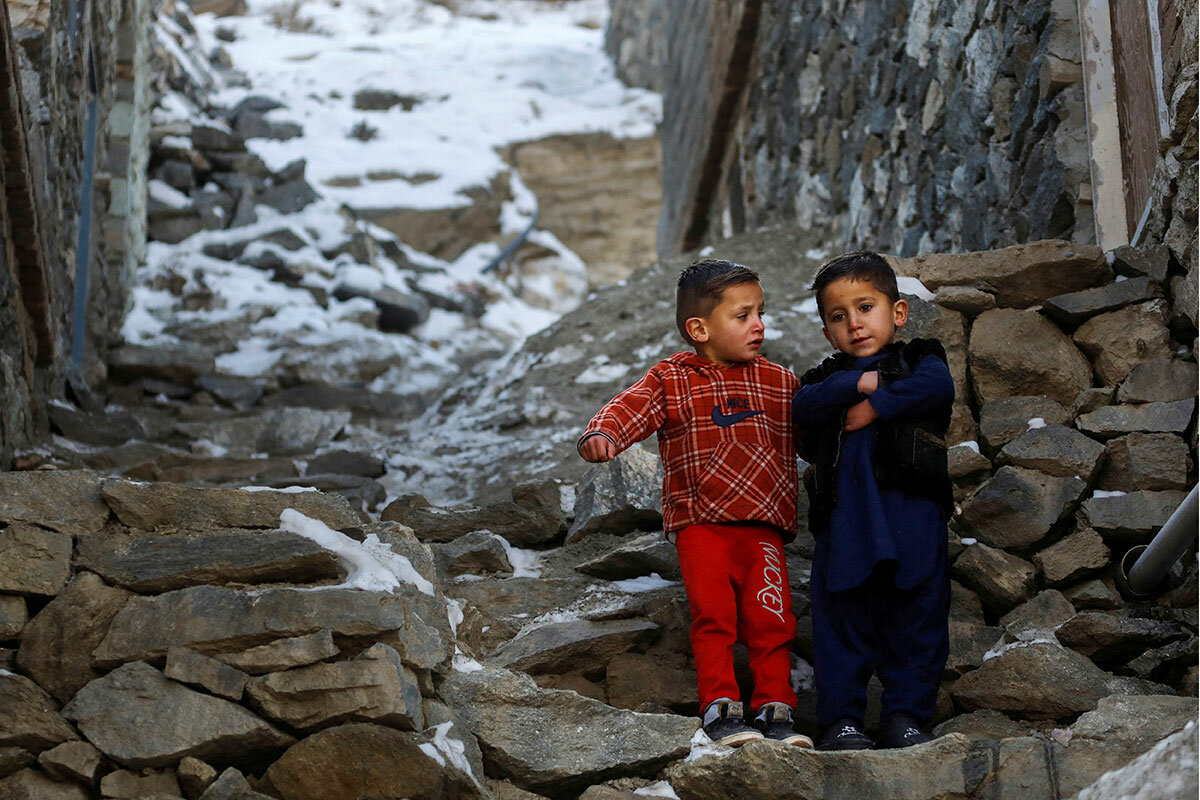
A look ahead
Thank you for joining us. Please come again tomorrow, when we look at Florida Gov. Ron DeSantis and his pragmatic approach to the environment.




